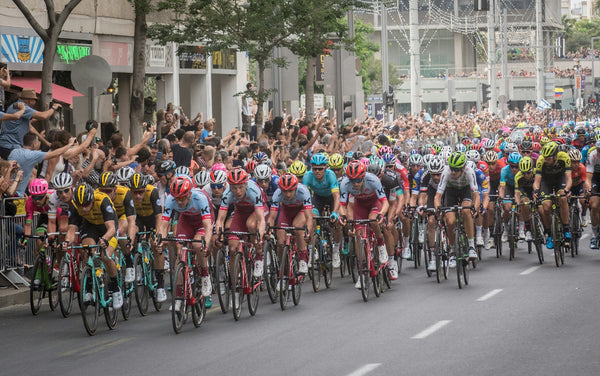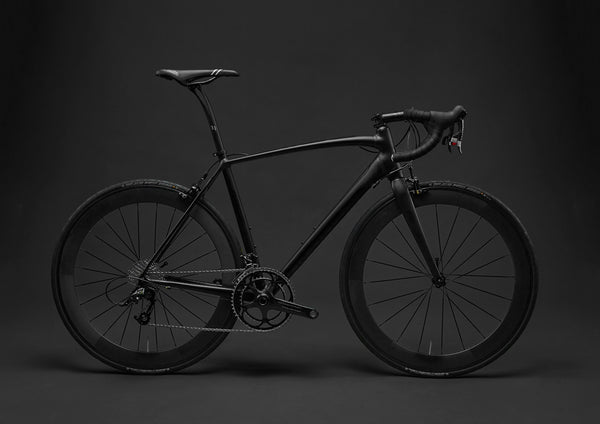Women’s professional cycling has been going through a much needed growth spurt the past several years. The teams are being forced to be more professionally organized, women riders are getting living wages, and more races are popping up on the calendar. There is still a long way to go towards parity with the men’s peloton in terms of wages, exposure, and professionalization of the organizers, but even just five years ago the current level would have seemed a distant dream.
And it’s great for us, the interested fan since it just gives us even more racing to watch – when it is broadcast. The recent demise of the GCN+ app throws a lot of these advancements into peril (read more about that issue in our article on YouTube cycling videos) since the question of continued accessibility to the broadcasts of women’s races will be a thorny issue if no other organization makes the effort to put these races on our screens.
Happily for the moment, there are a wide array of women’s professional races which pack the season’s calendar. The most important women’s races mirror many of the same most important races for men. That’s largely because many organizers have in the past several years made an effort to run the men’s and women’s versions of their races concurrently, or at least on the same weekend. But there are still a few outliers that are important to the women without having a men’s equivalent.
What is the most important women’s race?
The Tour de France Femmes avec Zwift is the most important women’s race. This should come as no surprise, though it does show the heavy grasp the ASO and the Tour de France has over the cycling world since 2023 was only the second edition of the race. But even in 2022, its first year, the TDFF avec Zwift was already the most important race on the women’s calendar.
There are several reasons for that. For one thing, it is such a recognizable name, the sort of race you can mention to your grandparents and they will know what you are talking about. It’s also a little misleading to say that this was only the second year for the race, because there have been many other iterations of a women’s Tour de France over the decades, and the current one can essentially build on that history.
Nevertheless, the race has a lot to offer both the athletes and the team sponsors. As the Tour de France for women, the race takes advantage of the full back-office efficiency and influence that the organizers of the men’s Tour de France offer. So the routes are well planned and challenging. The television coverage is complete and guaranteed. And victory at any of the stages can highlight the career of any cyclist. Like the men’s Tour, the multiple stages (seven in the women’s case) give all types of riders the chance to take a victory. Sprinters, classics specialists, opportunists, time trial specialists, climbers…they will all have their chance to shine.
Of course to win the overall, you have to be an exceptional talent, able to excel on all terrains. Being able to climb is the primary essential talent. That was definitely true in 2022 when Annemiek van Vleuten destroyed the competition up to Le Markstein and extended her lead at Super Planche des Belles Filles. Similarly in 2023, it was Demi Vollering’s turn to ratchet up the pressure up to Col du Tourmalet.
For 2024, the hallmark stage ends at the top of Alpe d'Huez. Though perhaps not the hardest climb in France, it certainly has been seen as the climbers’ world championship to win at the top of the Alpe. And since it is the seventh and final stage of the 2024 Tour de France Femmes avec Zwift, we will certainly know who the winner of the Tour will be once they reach the summit.
The two other Grand Tours
Like the men, the women also have three Grand Tours with the Giro d’Italia Women (frequently called the Giro Donne) and La Vuelta Femenina or women’s Tour of Spain. Though it should be noted that none of the women’s Grand Tours are three weeks long. For the moment at least, the organizers are keeping to a week-long format. And in general, the women racing these events say that that is long enough. Perhaps as the depth of the women’s peloton increases and they become more accustomed to longer races, this will change. For now, a week of hard racing over the rough roads of France, Italy, and Spain seems challenging enough.
The women’s Giro has been around for many years in different guises – sometimes also called the Giro Rosa – and though it took the place as the most important women’s stage race until the Tour de France Femmes avec Zwift was introduced, it has a checkered history of organizational and broadcasting issues that dulls the enthusiasm generally felt for it by the peloton. It is still hugely prestigious to win the race, not the least because it typically tackles some of the toughest climbs in the Italian mountains. Notably, in 1997, as the Giro d'Italia Femminile, it was the first race to take on the feared Monte Zoncolan in the Friuli region, which is considered one of the absolute most difficult climbs in Europe.
As for La Vuelta Femenina, it has a much more recent history. Once the ASO, the organizers for the Tour de France, took a majority share in the men’s Vuelta a Espana, they also established a women’s event to run alongside. In 2015, its first year, it started as La Madrid Challenge by La Vuelta which was a one-day race in Madrid to coincide with the final stage of the men’s Vuelta. Subsequently it has grown to be a seven stage race that interestingly in 2023 was raced in May instead of August/September when the men’s race takes place. It slots into what can be seen as the Vuelta’s historical place on the men’s racing calendar since for many years, the men’s Vuelta actually took place in the spring.
Since the women’s Giro takes place in early July and the women’s Tour in early August, they form quite a solid block of racing for the women to target. And in 2022, Annemiek van Vleuten became the first woman ever to win all three women’s Grand Tours, though it should be noted that that year, the women’s Vuelta did take place in September, which would have given her a more manageable dosing out of her racing schedule, with over a month separating the end of the Tour and beginning of the Vuelta that year for the women.
Important races for classics specialists
Similarly to the Grand Tours, the classics races most important for the women mirror the men’s quite closely. So you’ll have Omloop Het Nieuwsblad WE, Strade Bianche Donne, and Gent-Wevelgem most important leading up to the women’s Tour of Flander and Paris-Roubaix. After that, the Ardennes classics take over with Amstel Gold, Flèche Wallone Féminine, and Liège-Bastogne-Liège Femmes.
And as with the men, there are additional multi-stage races that help build up for the Grand Tours, or perhaps give super domestiques the chance to get a prestigious win, as was the case this past season with Marlen Reusser winning the women’s Tour of the Basque Country (Itzulia Women) and Tour de Suisse Women.
Important women’s races without a men’s equivalent
Though many of the biggest races in the current women’s professional calendar are attached to the men’s versions, which helps not only with fan recognition but also generally guarantees strong sponsors and television coverage, there are a few prominent races on the women’s UCI calendar that have a history all their own as standalone women’s events.
Perhaps the most famous and longest established is the Trofeo Alfredo Binda which takes place in northern Italy around the region of Varese. First raced in 1974, and an original member of the Women’s World Tour (established in 2016), this one-day race offers a difficult parcours and highlights the palmarès of everyone who wins it. Though it currently is raced the day after Milan-Sanremo, it has no affiliation with that other great northern Italian race.
Another race unique to the women’s peloton is the Tour de l’Ardèche in southern France. This stage race takes place in the brutally hilly Ardèche region and often includes stages racing through the beautiful Gorges de l’Ardèche. Past editions have even taken the women racing up nearby Mont Ventoux. Indeed, the Ventoux stage in 2016 may have been the first time anyone took notice of current Olympic road champion, Anna Kiesenhofer, when she won at the top of the mighty Ventoux with an advantage of nearly four minutes ahead of her nearest rival.
Most important women’s races - conclusion
The women’s racing calendar has grown exponentially in recent seasons. There are so many UCI races in Europe now that many of the teams have trouble fielding sufficient squads for each race since women’s teams’ budgets have not always been able to keep up with the growth explosion. The fact, too, that most of the women’s professional road races take place in Europe has meant that teams and riders from other continents like North America, South America, and Australia have had trouble finding invitations to these Euro-oriented races.
Admittedly, there is a lot of room for improvement for women’s racing, but it would seem churlish to complain too heavily in the face of the great progress that has been made even in just the past five or ten years. As fans, we can help by showing our support for women’s racing: watch the races, read the articles, let the media know that this is content you want to see. Support the sponsors who support women’s racing. Engagement is the best way to ensure continued growth of the sport.



































































































































































































































































